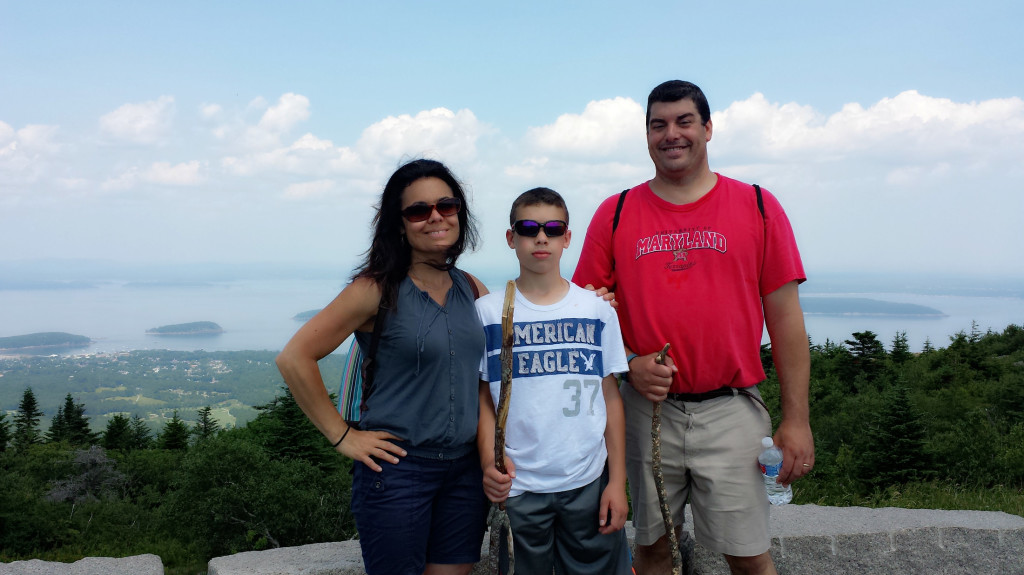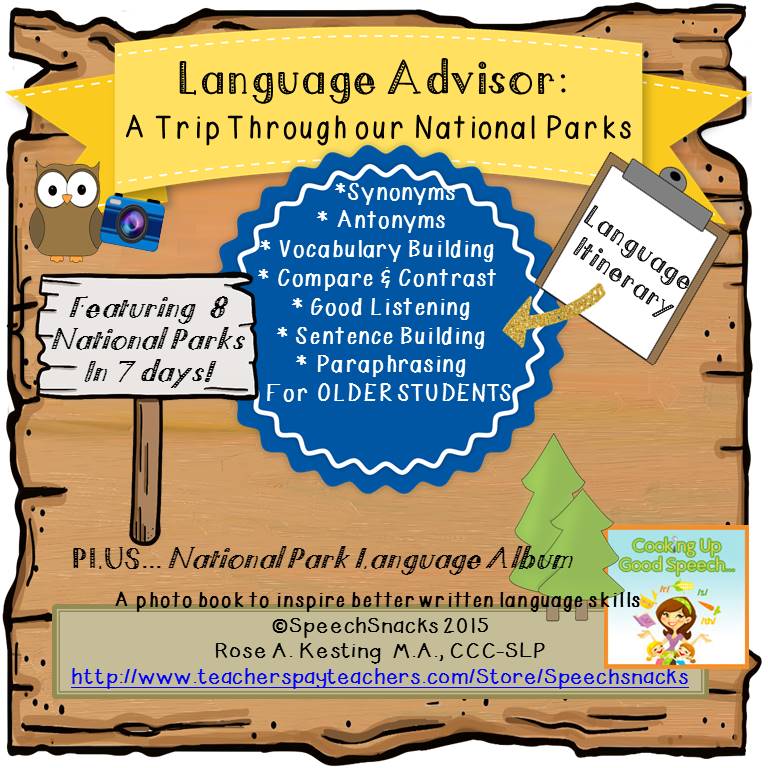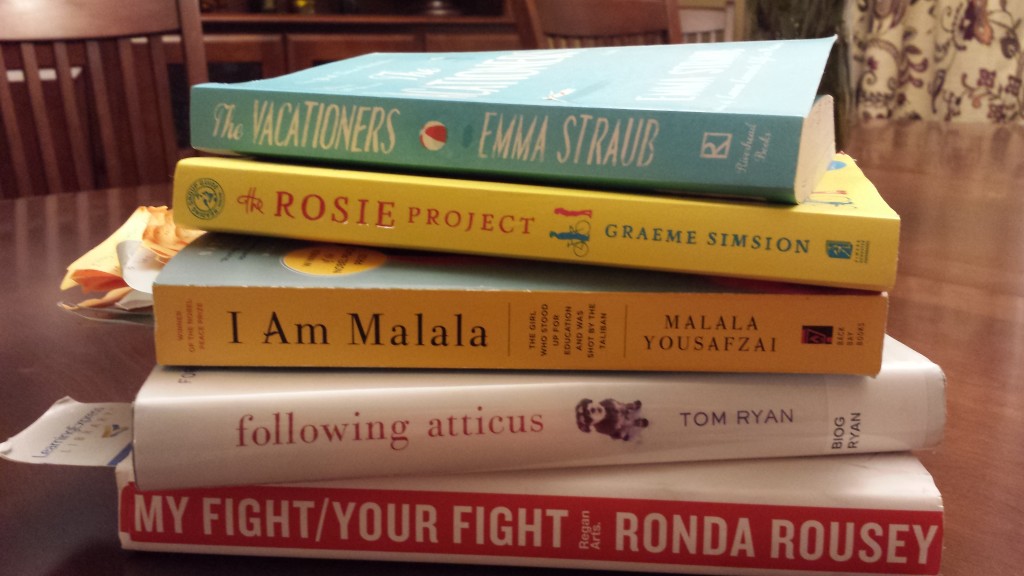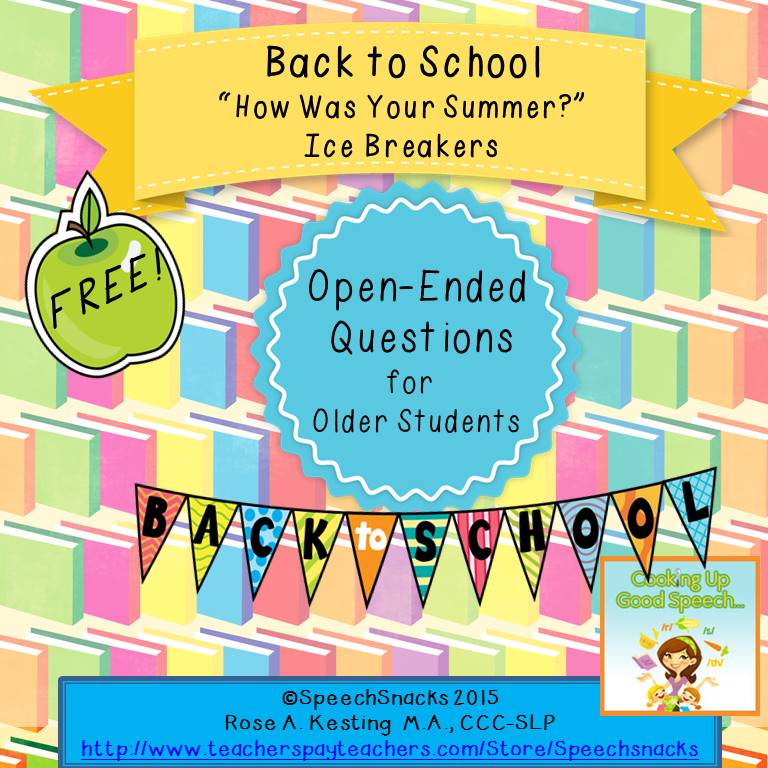One of the most frequently asked questions you will hear upon returning to school is “How was your summer?” It’s the perfect icebreaker for initiating a conversation and often elicits lengthy responses. I know I will personally repeat this questions many times during the first few days with my students. Not only do I want to hear what my students have to say, but I will also enjoy sharing with them my own summer experiences. And let’s face it, the real reason SLPs ask a question such as this is so that we can do a quick, informal analysis of areas such as sequencing skills, topic maintenance, eye contact, vocabulary choices, articulation errors, rate of speech, etc, etc …. This year, I plan on showing them (or maybe boring them with) the DVD I created of my wonderful summer adventure! We spent several days in breathtaking Acadia National Park in Maine . We hiked up mountains, biked through carriage roads and walked along the ocean path. By the time our trip was over, I was ready to look for some Maine real estate and never return home! ( Wishful thinking! ) Every picture I took could pass for a post card and I hope to use the photos to inspire lots of descriptive language from my students! {{{If you make it to the end of this post, you can grab the Back to School Icebreaker FREEBIE}}}

Me with my son and husband after a 2+ hour hike to the peak of Cadillac Mountain–at 1,530 feet, it is the highest point along the North Atlantic seaboard and the first place to view the sunrise in the United States from October through March.
(Some of us were still smiling at least!)
In fact I was so inspired by our trip, that I came home and immediately went to work creating a new product for my TpT store that would commemorate Acadia as well as several other national parks in our great country! I am so excited to share Language Advisor: A Trip Through Our National Parks with my students!
You’ve heard of Trip Advisor® , a tool that helps you plan your perfect trip. Well now there’s Language Advisor—a tool to help you practice better language skills while you navigate through far off places!
What you’ll find in this very comprehensive packet:
DAY 1: Synonyms in Sequoia: Read the passage page and then determine which word is the correct synonym from the accompanying exercise. 17 words are highlighted from the passage. Bonus activity: Use your knowledge of the words to create sentences from the pairs provided.
DAY 2: Antonyms in Acadia: Read the passage page and then determine which word is the correct antonym from the accompanying exercise. 16 words are highlighted from the passage. Bonus activity: Use your knowledge of the words to create sentences from the pairs provided.
DAY 3: Vocabulary Building in The Virgin Islands: Read the passage then use the “Language Advisor Rating Scale” to determine your understanding of the 14 highlighted vocabulary words. Vocabulary building exercises are included to address application of vocabulary in WH ?’s and a multiple choice format. Word pairs for creating original sentences is also provided.
DAY 4: Compare and Contrast in Yosemite and Yellowstone: Read through the passages on Yellowstone and Yosemite, then determine the similarities and differences between the two parks. Insert the information into one of the diagrams (Venn diagram or optional organizational chart provided.) Use the open-ended page to write a paragraph summarizing the similarities and differences between the two parks and then chose which park is your favorite. Support your reasoning using the information from the text.
DAY 5: Good Listening in The Grand Canyon: Read the passage and carefully listen to the details. Then answer the 12 comprehension cards. Some of the responses will be concrete in nature, however others will require inferential reasoning based on the contents of the passage.
DAY 6: Building Sentences in The Badlands: Highlight/underline the subjects, verbs, adjectives, adverbs, prepositions and conjunctions in the passage. Use the accompanying page as a review of the parts of speech and the activity page to add words to each category. If there are any remaining spaces, add your OWN words. Then use the following page to create your own sentences based on the lists you have filled in.
DAY 7: Paraphrasing in The Petrified Forest: Read the passage, then use the paraphrasing tips provided to rewrite each of the paragraphs within the passage in your own words.
National Parks Language Album:
Use the following pages to create your own guide to the U.S. National Parks.
Cut or fold the pages along the dotted lines and staple your booklet together. Use the non-fiction, informational passages to assist you in adding details and descriptions to your booklet.
Take your guide home and share the new information you have learned with your family. When you are finished with the activity, you will feel as though you have actually visited all 8 parks! Be creative and have fun!
National Park Data Collection Sheet:
Keep track of student responses for the antonym/synonym and vocabulary portions of this product.
My middle and high school students were given summer reading assignments from their teachers. I know one of the other big questions I will be asking them is “What did you read over your summer vacation?” I sure hope they did some reading over the break! It is so important to keep the mind active and stimulate continued vocabulary and comprehension development through reading!! My son is a middle schooler and of course I was keeping tabs on the amount of reading he was doing this summer. (I admit I needed to hound remind him repeatedly to read the books on his list.) I encourage him (and my students) to read non-fiction text as much as possible. Although I love seeing this age group reading a good science fiction/science fantasy novel, non-fiction stories have such great substance and help students make connections to real events and people. Here are some of the books that I personally chose to enjoy this summer—a mix a romance/comedy/melodrama and a big dose of non-fiction:
The Vacationers and The Rosie Project were both very amusing (and definitely NOT books to recommend to middle/high school students). The Vacationers was a great beach book filled with plenty of family conflicts and humor—the epitome of a very dysfunctional family trying to make the best of their unfolding inner and outer conflicts while on vacation together in Mallorca, Spain. I was entertained and stressed out at the same time while reading this one!
The Rosie Project was extremely amusing and caught my attention due to the fact that the main character is a brilliant genetics professor with Asperger’s Syndrome (although he doesn’t identify himself as such). He is in search of a wife and creates a survey as a means of finding Mrs. Right. Although most women who takes his survey fail to qualify for a number of reasons, (many of which only a “socially challenged” individual would find unacceptable), he manages to strike up a friendship with one of the women and it begins to develop into something more serious. It was interesting to learn about the social quirks demonstrated by the main character and see how others reacted to his oddities!
The rest of the books on my list were all very inspirational non-fiction stories about some pretty remarkable people and events! I would highly recommend I Am Malala and Following Atticus to middle and high school students. My 12 year old son read the story of Malala this summer as part of his summer reading assignments (take note of the orange post-it’s sticking out of the book in the picture below—-a reading comprehension strategy! I had him take notes every few pages of 2-3 important details from the story . This is an effective way to review key information later and helpful when writing a summary of the book.) Malala is an incredible young lady and winner of the Nobel Peace Prize. She was shot by the Talaban because of her beliefs in fighting for an education for girls. A must-read for every American and especially for American adolescents. We should never take for granted our right to a free education in this country!
My son also read Following Atticus after I completed the book. After hiking in Maine this summer, I was inspired to read this story about a man and his dog. They hiked the 4,000 foot peaks of the White Mountains in New Hampshire while raising money for those who died from cancer. Their real life tale has so many ups and downs and lessons to learn. I am now following their blog and Facebook page and continue to enjoy learning where this pair will hike next. If you are a dog lover, this is a must- read!
I also enjoyed Rousey: My Fight/Your Fight. If you don’t know who Ronda Rousey is, then I suggest you turn on ESPN, any sports news stations or visit your local book store because her name is popping up everywhere! I connected with this story on so many levels. Ronda Rousey is the UFC’s undefeated champion in her weight class as well as a former Olympic medalist in judo. She overcame so many obstacles to get to where she is today, including Childhood Apraxia of Speech (CAS). In her book she discusses her communication issues as a child and attending speech therapy . I truly admire this incredible athlete, and although I was a kickboxing instructor for several years, I would never want to find myself in the octagon with her. She is a force to be reckoned with and has her opponents tapping out in a matter of seconds! Although I loved reading this story, you will find lots of profanities and inappropriate language so I wouldn’t recommend this one to the kiddos just yet!
You’ve made it to the end of this post! Thanks for letting me share my summer adventure with you! I hope you get a chance to visit my TpT store and check out my National Parks product (I really loved creating this and have a new appreciation for nature and our National Park system) Plus, I have several other Back to School products for your older students. You can find them all HERE.
Pick up my Back to School free product too…..I hope it helps you start the year off smoothly and gets your students talking!! Back to School Icebreaker FREEBIE
















Acadia is amazing and while we didn’t pack up and move to Maine we did go to New England! Great post. Thank you for the freebie!